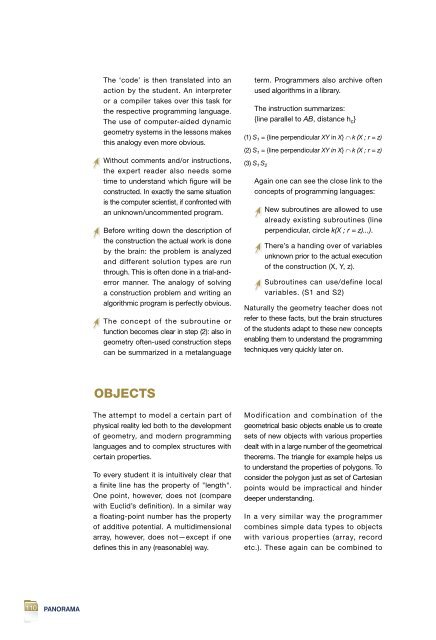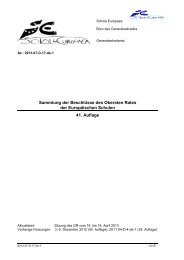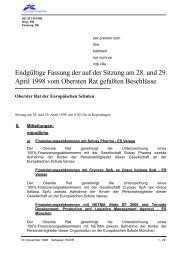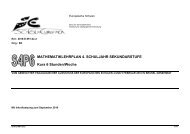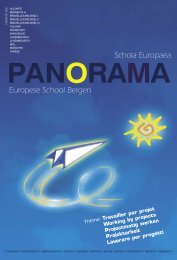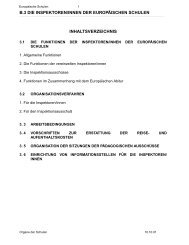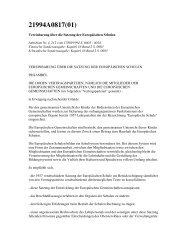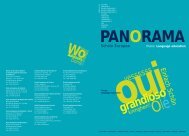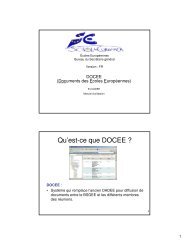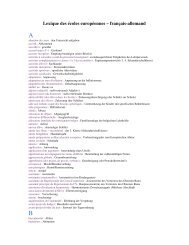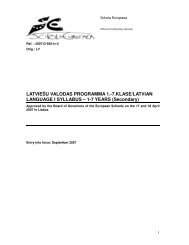Schola Europaea European School Brussels II
Schola Europaea European School Brussels II
Schola Europaea European School Brussels II
Create successful ePaper yourself
Turn your PDF publications into a flip-book with our unique Google optimized e-Paper software.
110<br />
PANORAMA<br />
The ‘code’ is then translated into an<br />
action by the student. An interpreter<br />
or a compiler takes over this task for<br />
the respective programming language.<br />
The use of computer-aided dynamic<br />
geometry systems in the lessons makes<br />
this analogy even more obvious.<br />
Without comments and/or instructions,<br />
the expert reader also needs some<br />
time to understand which figure will be<br />
constructed. In exactly the same situation<br />
is the computer scientist, if confronted with<br />
an unknown/uncommented program.<br />
Before writing down the description of<br />
the construction the actual work is done<br />
by the brain: the problem is analyzed<br />
and different solution types are run<br />
through. This is often done in a trial-anderror<br />
manner. The analogy of solving<br />
a construction problem and writing an<br />
algorithmic program is perfectly obvious.<br />
The concept of the subroutine or<br />
function becomes clear in step (2): also in<br />
geometry often-used construction steps<br />
can be summarized in a metalanguage<br />
OBJECTS<br />
The attempt to model a certain part of<br />
physical reality led both to the development<br />
of geometry, and modern programming<br />
languages and to complex structures with<br />
certain properties.<br />
To every student it is intuitively clear that<br />
a finite line has the property of "length".<br />
One point, however, does not (compare<br />
with Euclid’s definition). In a similar way<br />
a floating-point number has the property<br />
of additive potential. A multidimensional<br />
array, however, does not—except if one<br />
defines this in any (reasonable) way.<br />
term. Programmers also archive often<br />
used algorithms in a library.<br />
The instruction summarizes:<br />
{line parallel to AB, distance h c}<br />
(1) S 1 = {line perpendicular XY in X} ∩ k (X ; r = z)<br />
(2) S 1 = {line perpendicular XY in X} ∩ k (X ; r = z)<br />
(3) S 1 S 2<br />
Again one can see the close link to the<br />
concepts of programming languages:<br />
New subroutines are allowed to use<br />
already existing subroutines (line<br />
perpendicular, circle k(X ; r = z)...).<br />
There’s a handing over of variables<br />
unknown prior to the actual execution<br />
of the construction (X, Y, z).<br />
Subroutines can use/define local<br />
variables. (S1 and S2)<br />
Naturally the geometry teacher does not<br />
refer to these facts, but the brain structures<br />
of the students adapt to these new concepts<br />
enabling them to understand the programming<br />
techniques very quickly later on.<br />
Modification and combination of the<br />
geometrical basic objects enable us to create<br />
sets of new objects with various properties<br />
dealt with in a large number of the geometrical<br />
theorems. The triangle for example helps us<br />
to understand the properties of polygons. To<br />
consider the polygon just as set of Cartesian<br />
points would be impractical and hinder<br />
deeper understanding.<br />
In a very similar way the programmer<br />
combines simple data types to objects<br />
with various properties (array, record<br />
etc.). These again can be combined to


